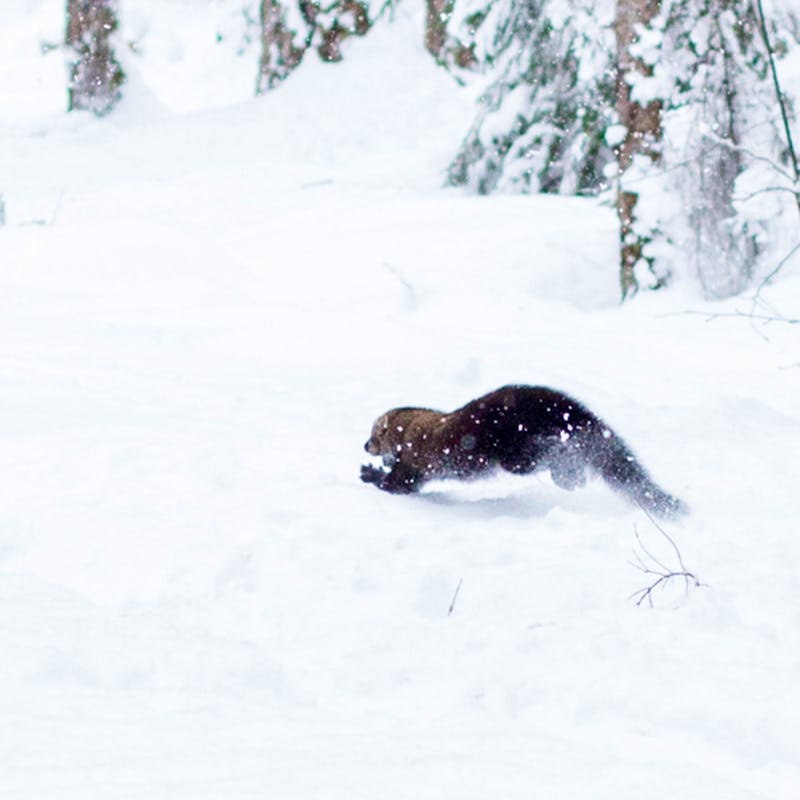Latest count shows population of critically endangered Mexican gray wolves is down
It’s not a title that most species would want, but the Mexican gray wolf (also known as “lobo”) is the most endangered gray wolf in the world. This smaller subspecies of the gray wolf once ruled as top dog throughout the American Southwest until humans drove them to the brink of extinction. And while the lobo population hit a record high last year, this year, the news isn’t so good. The latest population count shows there are now just 97 Mexican gray wolves in the wild, an 11% drop from last year.
A drop in the Mexican gray wolf count is the last thing the lobos need as they continue to fight for their survival. The conservation and scientific communities already know– and have known for years – how to set lobos on the road to recovery. In order for lobos to recover fully, the U.S. Fish and Wildlife Service needs to commit to more wolf releases, a science-based recovery plan, and more wolf populations in suitable habitats.
It seems pretty straightforward, right? Yet, the Service has been unable to move forward on these sensible solutions because the agency has been feeling the heat from four key states involved in Mexican gray wolf recovery efforts — New Mexico, Arizona, Colorado and Utah.

It all came to a head in November of last year. Governors from all four states sent a letter to Secretary of the Interior Sally Jewell, expressing their concerns over recovery of the Mexican gray wolf. The governors argued that wolves never lived north of Interstate 40, and should therefore not be allowed in habitats in the Grand Canyon ecoregion and northern New Mexico/southern Colorado, and that the bulk of recovery should occur in Mexico.
Frankly, the governors’ arguments don’t hold water. They rely on out of date science in trying to keep wolves south of an arbitrary line, but a recently published, peer-reviewed study from UCLA draws a more accurate picture of where the lobo once roamed. The study shows the Mexican gray wolf’s historic range reached far north of Interstate 40, including lands in California, Nevada, southern Utah and southern Colorado. In any case, where the lobo used to live is largely irrelevant in charting its future as habitats are altered by climate change and human development and the Service can reintroduce Mexican gray wolves where there is suitable habitat.
Based on peer reviewed research, the Service’s own team of scientists identified the Grand Canyon ecoregion of Arizona and Utah and northern New Mexico/southern Colorado as necessary regions for Mexican gray wolf recovery. These areas have sufficient habitat and prey, are sparsely populated by people and roads and could support two new core populations near the existing one in Arizona and New Mexico.

Wolf supporters rally to protest New Mexico’s anti-wolf decisions.
In addition to the letter from the four governors, the Four Corner states have demonstrated their opposition to Mexican gray wolf recovery efforts in other ways. The Arizona Fish and Game Commission has voted to block all new releases of adult wolves – quite a betrayal after the commission got the Service to agree to their many anti-recovery demands in the latest management rules. Utah has been aggressively hostile in voicing its disdain for hosting any wolf populations. Last month, Colorado Parks and Wildlife passed an anti-wolf resolution banning the reintroduction of all wolves, including the Mexican gray wolf, across the state. The next day, the New Mexico Fish and Game denied Ted Turner’s Ladder Ranch appeal, which would have allowed the ranch to hold lobos on their way to the wild. New Mexico’s commission has also refused to allow wolf releases.
Enough is enough. The Mexican gray wolf needs all parties involved in lobo recovery efforts – the Service, states, private landowners, conservation groups, local communities — to work together to implement viable, science-based solutions, or the lobo will be lost forever. The Service needs to stop pandering to the states, assert its rightful authority and do its job: recover the Mexican gray wolf.
It’s high time conservation goals trumped political ones.




